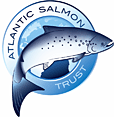Workshop sessions
Topic 3. What do we mean by ‘reference conditions’ in relation to hydromorphology?
- What state should reference conditions aspire to? (i.e., at what point in history should reference conditions be characterized? Is the reference always ‘good’ ecologically? To what degree is ecology itself part of the definition (forests, beaver, wolves, etc)?)
- Approaches to identifying to reference conditions (i.e., historical vs theoretical vs analogue); advantages and disadvantages of each approach, how can they be integrated, what scales are useful for each.
John Buffington, USFS, Boise, Idaho, William E. Dietrich, University of California, Hamish J. Moir, The Macaulay Institute, Timothy J. Beechie, NOAA Fisheries, Seattle, Washington, Chris Soulsby, University of Aberdeen, and David A. Sear University of Southampton.
Defining reference conditions for assessing biophysical status of rivers.
As part of environmental legislation, land managers in the United States and Europe are charged with maintaining and restoring the biophysical condition of rivers. In order to do this, reference conditions for the natural state of the river and its intrinsic potential must be established to assess current biophysical status and to set targets for desired future conditions. Three primary methods exist for determining reference conditions: historical reconstruction; use of analogue sites (paired basins); and theoretical prediction (analytical reference state). Where possible, we recommend that each of these methods be used in the development of land management plans, since they may provide different types of information, or complimentary lines of evidence that could strengthen management decisions. We also emphasize that reference conditions are not single-value static states, but are dynamic conditions with a range of variability that depends on both the local physiography and site-specific location within a river network.
Topic 4. Classification/ typology/ hydromorphological indicators
|
Updated: 23 Jan 2024, Content by: HM
|






